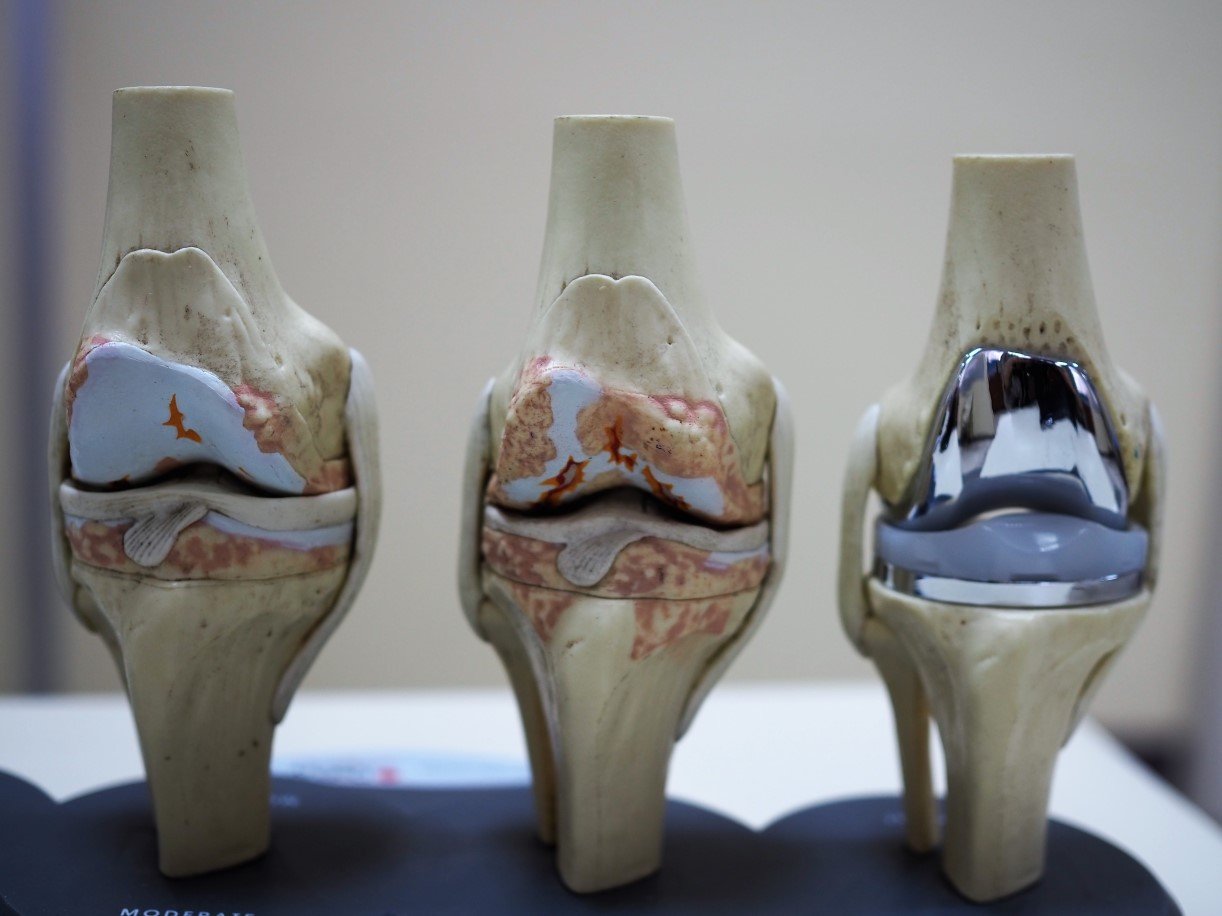Total Knee Replacement Implant
A regular Total Knee Implant irrespective of Make or Model typically consist of 4 parts
- A metal alloy femoral component (fits lower end of thigh bone)
- A titanium / Cobalt – Chromium Tibia component (Fits upper end of leg bone)
- A Poly-ethylene plastic spacer in between these component for smooth movement
- A poly-ethylene patella button (fits back of knee cap) may not be required in some patients


Components 1,2 and 4 are fixed to bone with help of Bone cement. Movement happens between component 1 and 3.
The standard most commonly used implant consists of Cobalt – Chrome alloy femoral component (Figure 1) articulating with polyethylene surface mounted on a metal tibial tray.
These Implants have a proven track record of 15 – 20 years and have been able to provide good pain relief and functional outcomes in vast majority of patients.

Some alternative bearing surfaces currently available are
- Zirconia (oxidized zirconium) the Zirconium metal surface is transformed into a ceramic layer of oxidized zirconium or zirconia (Figure 2)
- Titanium Nitride coated onto the surface of a titanium-alloy femoral component (Figure 3)
- Zirconium nitride or Titanium Niobium Nitride ceramic surface coating applied to a cobalt chrome alloy Femoral component (Figure 3)
- Delta ceramic / PEEK (currently not available commercially).
Possible advantages
- Better wear properties (in Laboratory studies) thus increasing life of implant and some are marketed as 30 years knee with cross link polyethylene. Generally Preferred for younger patients especially less than 60 years of age.
- Safer in patients with metal allergies
- Wider range of Sizes and surface options in Newer Knee Systems.
